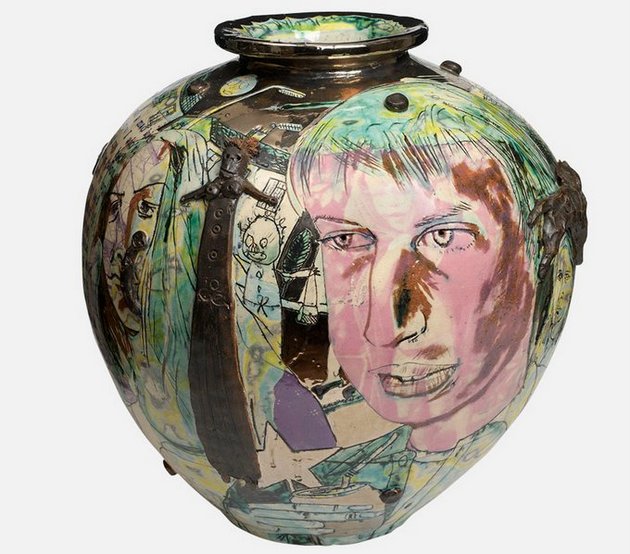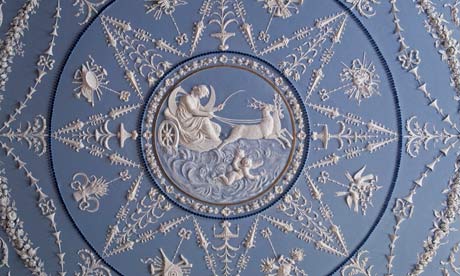Pottery is something that can evoke childhood memories of a splattered clay workshop, or perhaps summon up images of Patrick Swayze gently caressing Demi Moore over a potters' wheel. More technically the term refers to the serious art of ceramic-based crafts that are produced from clay, made into a required shape and then fired in a kiln at an extremely high temperature. This firing is totally necessary as it removes all the moisture from the clay, transforming it from a sloppy and defenceless clay squidge into a fixed given shape. The fired item can then be glazed and beautified to give it any desired pretty extras.
Pottery is a prehistorical craft, meaning that it can be traced back to a time before history was recorded in writing. Because of their incredibly durable nature, pottery artefacts are some of the only remaining archaeological remains left from this period in history. The oldest known pottery dates to 20,000 BC – the height of the ice age – and comes from China.
Since its advent, potteries' uses have only expanded. Today it is one of the most commonly practiced crafts, used for construction, culinary and decorative purposes. 'Coiling' is one of the earliest known methods of creating pottery, and is used to shape clay into vessels. The basic idea is to take a long roll of clay and then wind it up to create the desired shape. The coils can then be smoothed out to make the vessel watertight, and then of course fired to fix it in its shape.
British artist Grayson Perry (b. 1960), who won the Turner Prize in 2003, is primarily known for his cross-dressing and fine ceramics. He first came across pottery aged 23, and began to develop images and text in glaze on a series of plates that represented his own experiences in the form of explicit scenes that often contained sadomasochism, transvestism and bondage. When he was awarded the Turner Prize, it was the first time that it had been given to a ceramic artist. According to Perry, he only made these plates because, at the time, these were the only objects that he had been taught to produce. He claims that he chose pottery as his medium because of “the ways artifice could be deployed to make the innocent or honest pot have a purpose and mean something.” This is clearly a preoccupation for Perry – he takes an 'ordinary' pot and embellishes it with elaborate and unusual descriptions, juxtaposing 'honest' pottery against wayward 'artifice'. Perry's work is influenced by various ceramic traditions including folk art and Greek pottery. In his own words: “I like the whole iconography of pottery. It hasn't got any big pretensions to being great public works of art, and no matter how brash a statement I make, on a pot it will always have a certain humility.”

Perry's interest in ancient Greek pottery inevitably influenced the subject matter of his pottery, as well as the shapes and styles of his ceramic vessels. The depiction of stories and myths on the facades of ceramics is a common trope of ancient Greek pottery – something that Perry has very much payed homage to in his own work. Most of the information we have today concerning ancient Greek painting aesthetic comes from everyday earthenware, which has survived because of its durable nature. Most ancient Greek vessels were made using the wheel, which dates back to as far as 2,500 BC. Numerous techniques were employed to inscribe the pots with depictions of everyday life as well as mythological stories. Some pots would have had ritual functions, and others were used for domestic purposes.

Perhaps you are familiar with the name Wedgewood? Founded in Staffordshire, England, in 1759, they have been making sought-after ceramic products ever since. The style of Wedgewood is distinctly neo-classical, lightly referencing ancient Greek ceramics. One of the most famous Wedgewood aesthetic is the neo-classical 'jasperware' – pottery that has a matte finish and most often comes in a pale blue colour, inscribed with white inlay. Today you can even visit the 'Wedgewood Visitor Centre' and have a go at pottery yourself, but it's helpful to keep in mind that it's unlikely that you will be next in line for the Turner Prize.

